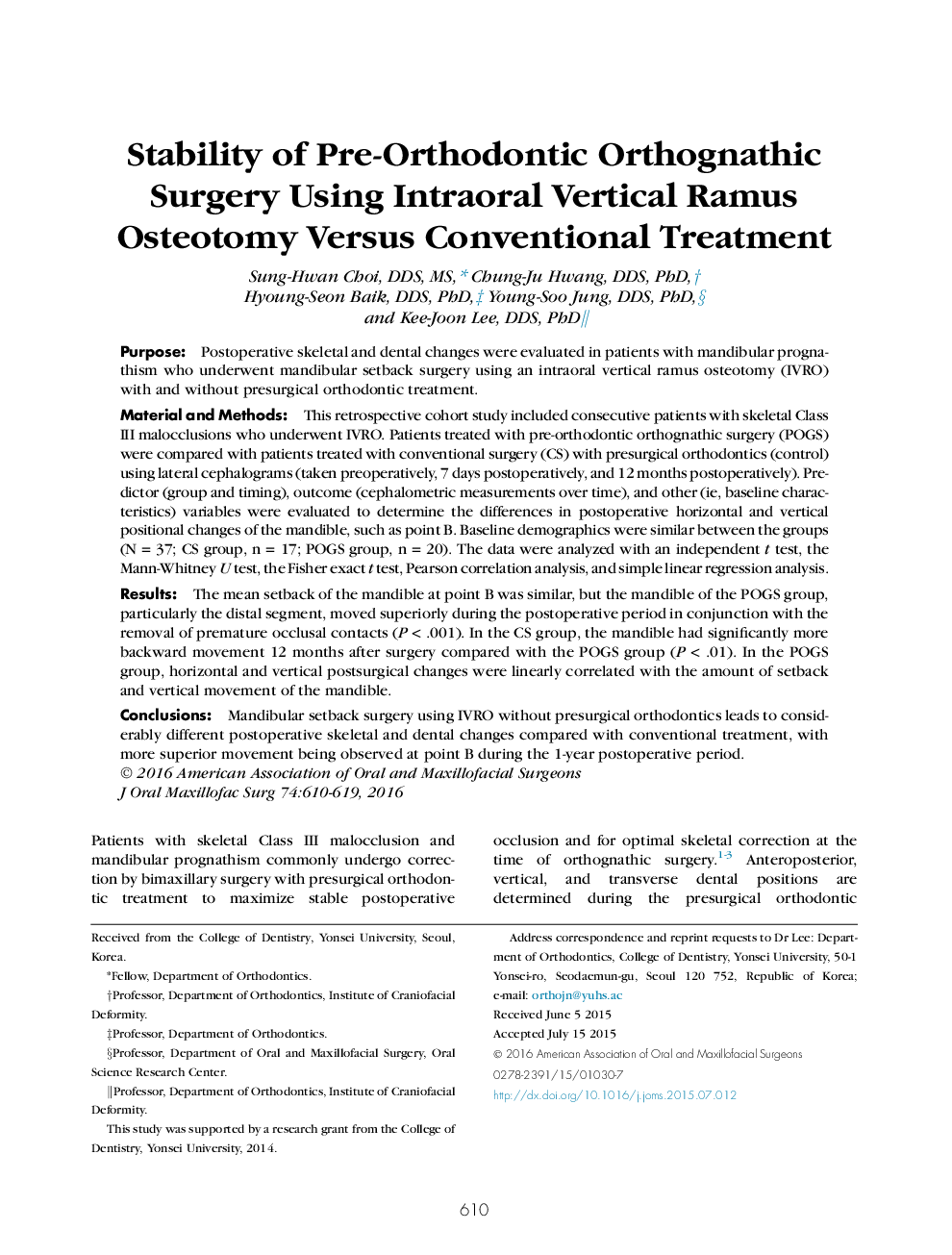| Article ID | Journal | Published Year | Pages | File Type |
|---|---|---|---|---|
| 3157657 | Journal of Oral and Maxillofacial Surgery | 2016 | 10 Pages |
PurposePostoperative skeletal and dental changes were evaluated in patients with mandibular prognathism who underwent mandibular setback surgery using an intraoral vertical ramus osteotomy (IVRO) with and without presurgical orthodontic treatment.Material and MethodsThis retrospective cohort study included consecutive patients with skeletal Class III malocclusions who underwent IVRO. Patients treated with pre-orthodontic orthognathic surgery (POGS) were compared with patients treated with conventional surgery (CS) with presurgical orthodontics (control) using lateral cephalograms (taken preoperatively, 7 days postoperatively, and 12 months postoperatively). Predictor (group and timing), outcome (cephalometric measurements over time), and other (ie, baseline characteristics) variables were evaluated to determine the differences in postoperative horizontal and vertical positional changes of the mandible, such as point B. Baseline demographics were similar between the groups (N = 37; CS group, n = 17; POGS group, n = 20). The data were analyzed with an independent t test, the Mann-Whitney U test, the Fisher exact t test, Pearson correlation analysis, and simple linear regression analysis.ResultsThe mean setback of the mandible at point B was similar, but the mandible of the POGS group, particularly the distal segment, moved superiorly during the postoperative period in conjunction with the removal of premature occlusal contacts (P < .001). In the CS group, the mandible had significantly more backward movement 12 months after surgery compared with the POGS group (P < .01). In the POGS group, horizontal and vertical postsurgical changes were linearly correlated with the amount of setback and vertical movement of the mandible.ConclusionsMandibular setback surgery using IVRO without presurgical orthodontics leads to considerably different postoperative skeletal and dental changes compared with conventional treatment, with more superior movement being observed at point B during the 1-year postoperative period.
